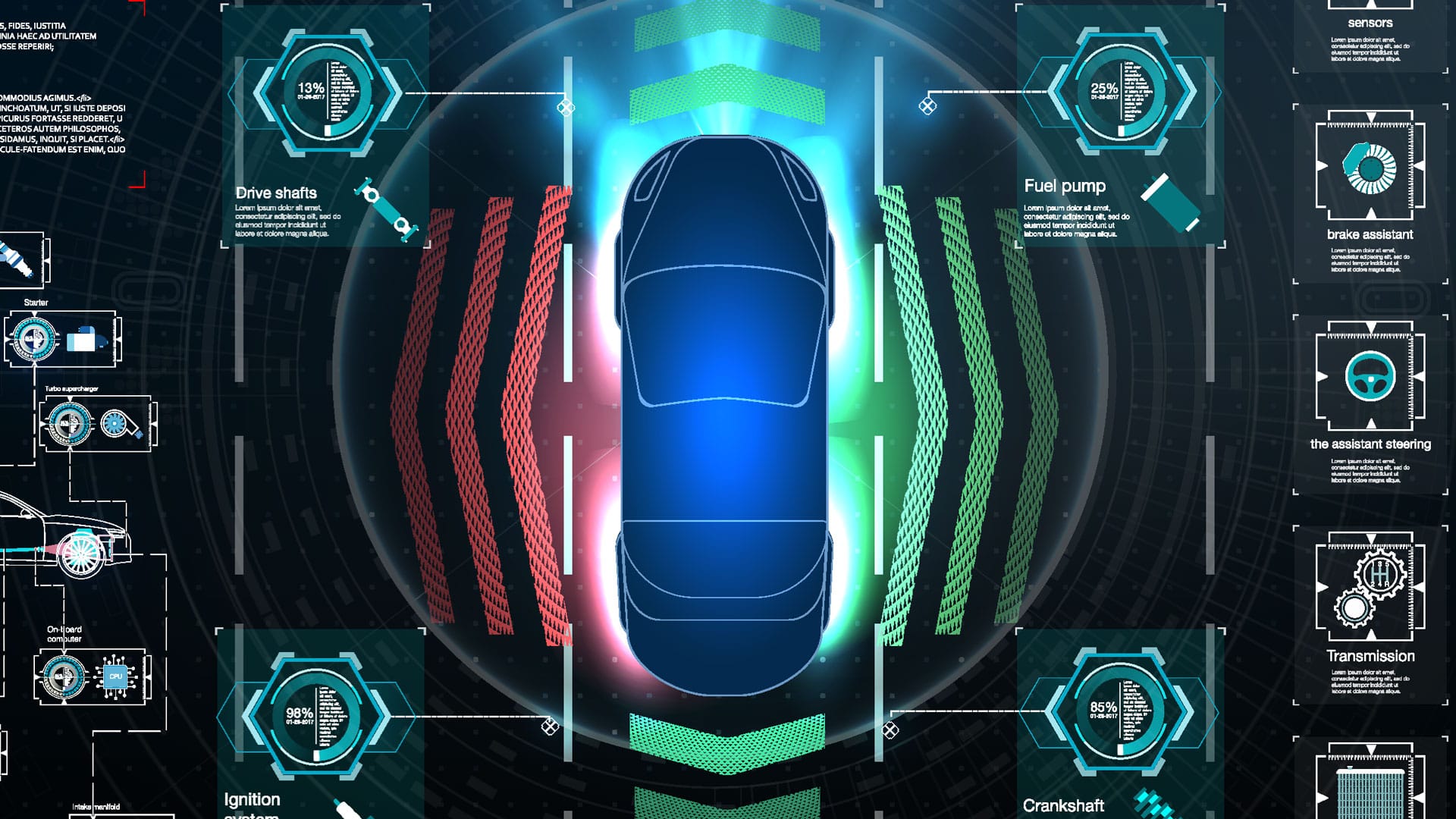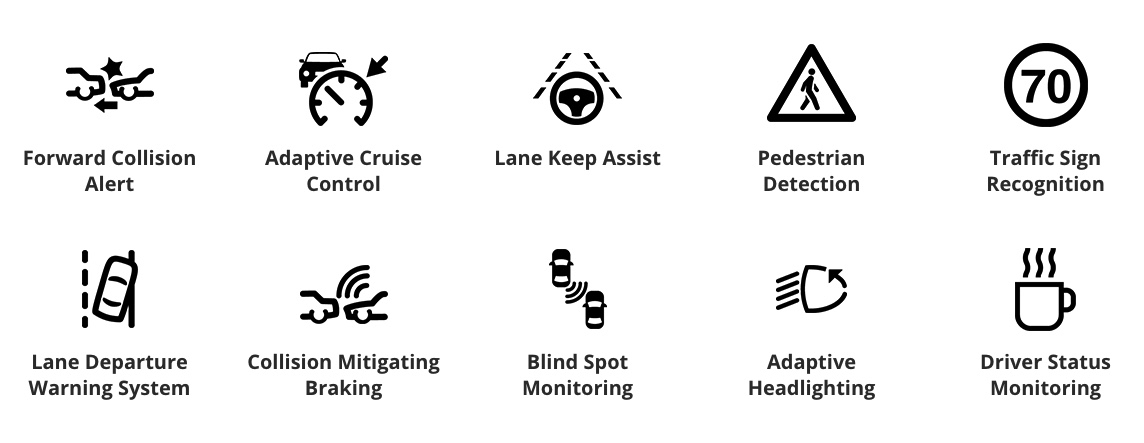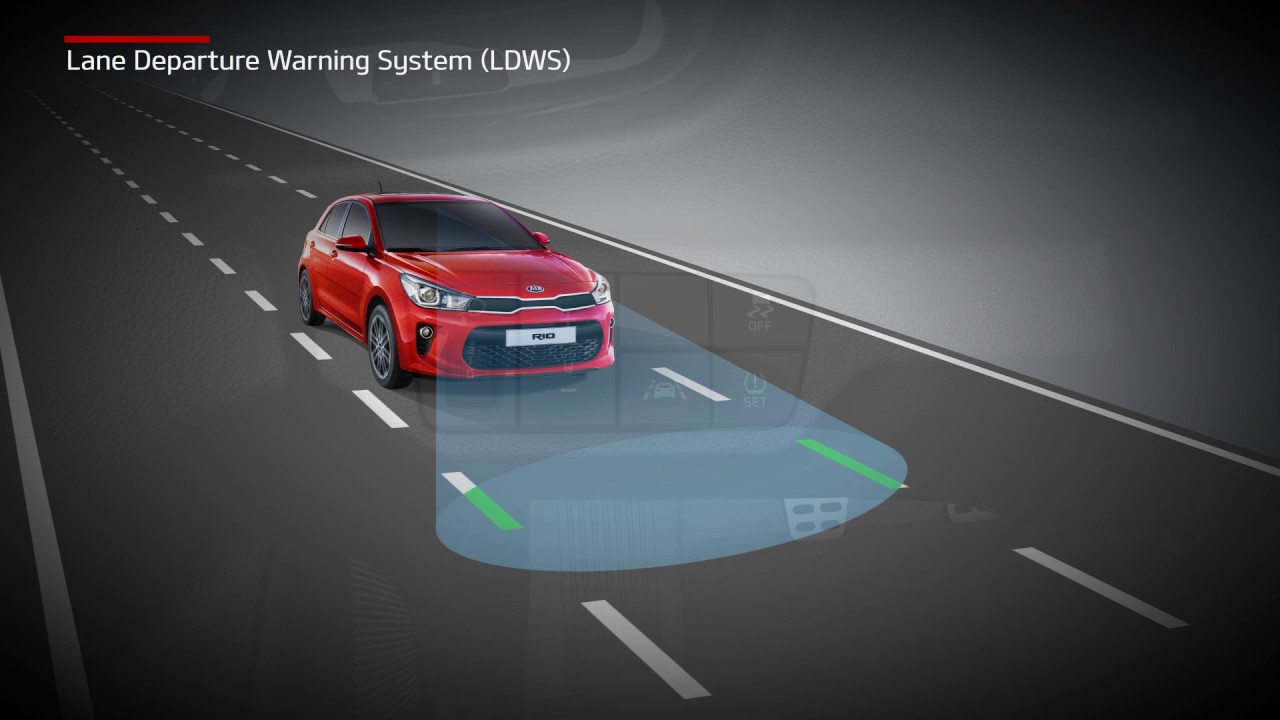
What is ADAS?
One of the most common questions I get asked on a daily basis is what is ADAS?
“That’s a good question” is usually my initial response, before going into a quick explanation.
To be frank, working in auto glass and being surrounded with these technologies every day I’m not so sure that it is a good question; don’t get me wrong, I’m not an elitist, but I’m honestly surprised that so many people drive vehicles in which they are unfamiliar with many of their key safety systems.
If one of your friends or family members claimed not to know what a turn signal was, first of all, it might explain some of their driving habits (Jokes), but if they were serious, you’d have some questions about their living arrangements. Mainly, did they live under a rock for the last few decades? What about airbags? What about fog lights and hi/low beams?
I know what you’re thinking. Here’s the auto glass guy taking shots at all the poor souls who’ve found themselves in the unenviable situation of not knowing about the many new features in the car they are likely still paying for. Now they need a windshield replacement, and they came here to have their questions answered, and he’s just making fun of them. “Why doesn’t he just get it over with and explain it?”
Have faith, I’ll get there.
At the root of the issue is a simple fact. Vehicles have gotten complicated – like, really complicated. So complicated that some of the processes going on in the background are done so well, that you aren’t even aware anything is happening.
It’s easy to tell what a speedometer monitors, or a tachometer for that matter. (For all you under the rock living folk, that’s your vehicles speed and engines RPM respectively).
What does LDWS, LKAS, FCM, FCW, ACC or TSR do? What do they stand for? This isn’t just industry insider jargon, these are terms used in the dashboards of more and more vehicles every year.
I think auto manufacturers assumed somewhere along the way that in this age of tech savvy consumers, understanding and adopting some of these terms into their daily lives would come naturally. Why wouldn’t they after all? You would think now with their iPhones and digital media consumption, complicated device model names and increasing comfortability with industry jargon across product categories, that customers would pick up ADAS and the many features that go along with it easily – to be absorbed and understood along with everything else.
Plain and simple, this just didn’t happen.
Whether consumers are willfully ignorant, or woefully un-informed, at least 3 out of 4 people I talk to on a daily basis have zero idea they even had these features in their vehicle, let alone what the features do or how they work. Working daily with auto glass and trying to educate customers on the importance of calibration of some of these sensors, what components are involved in their regular operation and what to look for to ensure they are working as intended, I’ll admit, its exhausting.
So, I did what most millennials do in this situation, I came to the internet to complain.
Since you’re here though, I might as well go through some of it with you.
Advanced Driver Assistance Systems
The basic premise of all ADAS systems is to gather information from a sensor or multiple sensors in a vehicle about the environment around it while it is in motion. These sensors include Cameras, light detection and ranging systems (LiDAR), infrared cameras and even more primitive basic Radar emitters and sensors.

The most promising and common combination for the future of fully autonomous vehicles is a mixture of basic visual camera data and LiDAR. Auto manufacturers are still a long way away from fully autonomous vehicles, but ADAS features are the essential building blocks of this technology and have acted as excellent testing grounds for the individual features in a modular fashion.
Outside of legal issues many vehicles on the road today are almost capable of driving themselves as they are. Acura MDX and Mazda CX-5 are excellent examples. They have full emergency braking, lane keep assist and traffic sign recognition, along with adaptive cruise control and advanced pedestrian detection.

AI software fuses this data together to create complex virtual environments around the vehicle, in 180 – 360 degrees.

Common visual data between the LiDAR and Camera sensors is combined to recognize a variety of different objects.
If you’d like to see these sensors in action, check out the video below. You can see how LiDAR creates a complex virtual environment around the vehicle, even in the rain, allowing the vehicle to have an almost “out of body experience” while it looks down on itself.
Now that we have gone over the basics on how ADAS sensors work, I’ll give a quick rundown of each feature that you might find in your vehicle today, one by one.
The symbols for these features are generally standardized even between manufacturers. Their symbols are found below.


LDWS – Lane Departure Warning System
One of the first ADAS features to show up in vehicles, Lane Departure Warning Systems use the vehicles sensors to detect the lines and even tire tracks on the road, as well as road signs and other data to determine where the lane ends.
This feature acts as a virtual rumble strip like you find on the edge of the highway. When your vehicle starts to stray out of the lane you are in, and the system detects that no lane change signal has been set by the driver, the system will beep and flash a warning on your dash. In 2015-2020 GMC and Chevy full size SUV’s and Trucks like the Tahoe and Yukon, or Silverado and Sierra, the seat actually vibrates, simulating a rumble strip for whatever road you are on!
This feature is great for keeping the driver alert on long drives. Despite their best intentions, drivers easily become distracted looking for addresses, playing with their radio settings or rubber necking in accidents. LDWS helps to warn you when the vehicle is drifting.

ACC – Adaptive Cruise Control
Rather than have vehicles set at an exact speed when cruise control is engaged, adaptive cruise control is set to a following distance from the vehicle ahead. ADAS sensors pick up cues from the traffic behaviour and automatically adjust speed, so you aren’t constantly adjusting your cruise control speed every time someone merges into the lane ahead and is going two kilometres per hour slower than you. You might also find that when travelling vehicles have slight differences in set speed. Even though all the vehicles on a particular stretch might be set at 100kph, they all have slight deviations on this speed, often causing them to drive closer and closer. Adaptive cruise control fixes all these problems. Working with LKA (Lane keep assist), the vehicle becomes practically self-driving, with only minor input needed from the driver.
There are four main types of adaptive cruise control
The four main categories of ACC are:
-Vehicles with Full Speed Range 0MPH are able to bring the car to a full stop to 0 mph and need to be re-activated to continue moving with something like a tap of the gas pedal.
-Vehicles with Traffic Jam Assist / Stop & Go auto-resume from standstill to creep with stop and go traffic.
-Vehicles with Partial cruise control cuts off and turns off below a set minimum speed, requiring driver intervention.
-Vehicles with fully automated speed control can respond to traffic signals and non-vehicular on-road activity.

FCA/FCW– Forward Collision Alert / Forward Collision Warning
Different from active braking systems, Forward Collision Alert and Forward Collision Warning systems monitor the road ahead looking for stationary objects and other vehicles you may be following too close to. They usually have a sensitivity setting, allowing you to “set” your following distance. This is not the same as Adaptive cruise control, or Emergency braking. Forward Collision alert/warning systems do not brake for you. They use lights, sounds and even vibrations to alert the driver of an impending collision. They will also warn you if you are following closer to the vehicle ahead than you have set the warning distance to.

LKA/LKAS – Lane Keep Assist
Lane keep assist works a lot like LDWS (Lane departure warning system). The sensors pick up the same information about the road ahead, and the lane you are in, but instead of beeping, vibrating or flashing lights at the driver, LKA uses the electronic steering in the vehicle to actually adjust the steering wheel, and keep you on the road! This feature can seem a little spooky the first few times you see it in action. If there is any feature that tends to make people uncomfortable with their ADAS systems, its this one. Feeling the wheel actively tug against your direction might be unsettling, but with a firm grip on the wheel, the system is designed to detect your direct steering input and disengage. Having a properly calibrated forward facing camera is crucial to having this feature work in a safe and predictable manner.

Pedestrian Detection/Traffic Sign Recognition
Using the LiDAR and forward-facing camera, specific objects are recognized and recorded by the ADAS system in real time, allowing for the detection of pedestrians, and sorting them out from the background of street signs and postings, and spotting them way ahead of possible collisions. Your vehicle will see a child playing near the side of the road, and then actively track their movement. If the child was to run out onto the street, the vehicle gains itself crucial seconds of response time to react to the situation and engage emergency braking systems faster than the driver could ever respond to the situation. Traffic sign recognition works in the same manner, but rather than track the objects movement, it determines it is a traffic sign, and uses the visual forward-facing camera to read the sign and display this information to the driver. For example, the last posted speed limit the vehicle drove by. It also assists with GPS navigation by reading the street names and making a more accurate determination of where to turn than GPS positioning could all on its own.

CMBS/EBS - Collision Mitigation Braking System/Emergency Braking
Using a millimeter wave radar and forward-facing windshield mounted camera, CMBS systems will monitor the following distance of the vehicle ahead, much like FCA (Forward Collision Alert). If the equipped vehicle gets too close to a vehicle or object ahead, above a certain speed, the vehicle will automatically apply light braking. If the system detects an unavoidable collision, with no input from the driver, the system will apply hard braking and bring the vehicle to a stop, usually in enough time to avoid the collision altogether. Mazda vehicles have a special version of CMBS called SCBS (Smart city brake support). This system works the same way, but at low speeds, (Less than 30km/h), in addition to applying the brakes, It also reduces engine output. This system is great for high traffic areas with low speeds, where driver distractions can be highest while they look for an address or someone on the side of the road. This greatly reduces the chances of fender benders in congested areas.

BSM – Blind spot monitoring
Using cameras and LiDAR, as well as millimetre wave radar, vehicles approaching from behind the vehicle in the adjacent lanes are detected, and if the driver signals to turn into the vehicles path, or starts turning the wheel, lights and sound will beep on the dash, and in special lights build into the side view mirrors. This alerts the driver to vehicles they may have missed seeing in their blind spots. While not a replacement for shoulder checks, this system is an extra layer of defense against this common cause for accidents.

Adaptive Headlighting
Using the forward-facing camera and LiDAR to detect turns coming up in the road, as well as oncoming vehicles, the headlights will actually turn to look at the corner as you approach in the equipped vehicle, (Curve adaptive headlights) and even automatically dim when they see vehicles approaching in different light conditions depending on the time of day (Automatic Hi-beams), or while driving through dark tunnels etc. Adaptive driving beams (ADB) are an advanced feature not found on many vehicles but show promise for market-wide adoption. They use complex LED arrays to minimize dazzling other drivers while at the same time keeping light pointed where it needs to be to optimize safety and driver visibility.

DSM - Driver Status Monitoring
Last but certainly not least, with all these ADAS features making it easier and safer to drive, some of these features could be abused by the driver. To ensure that the driver is paying attention and looking at the road, some systems employ cameras pointed at the drivers face and pressure sensors in steering wheels. To keep the ADAS functions like Adaptive Cruise control or Lane keep assist working, the vehicle periodically checks the camera and uses AI to determine if the driver is looking at a handheld device or are falling asleep. Likewise, pressure sensors in the steering wheel will require to be touched or held with moderate pressure, or the ADAS features shut off. DSM is the last line of defense against the intended ADAS features from being used as self-driving technologies.
